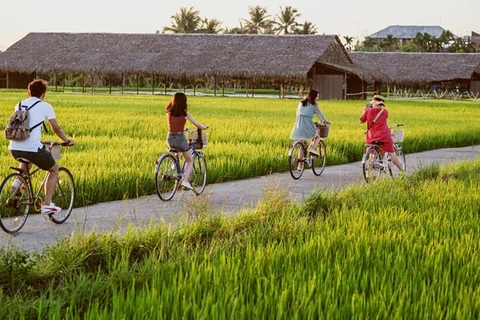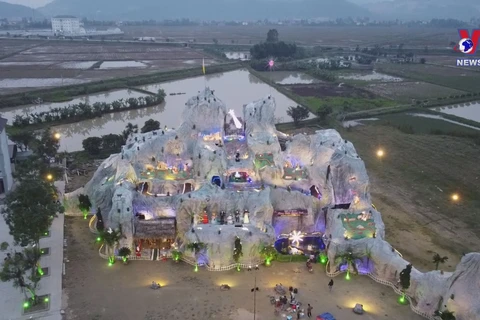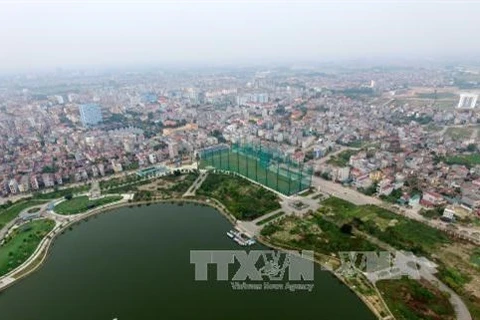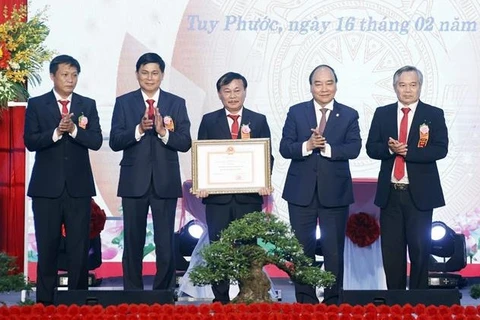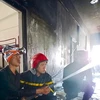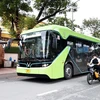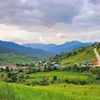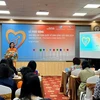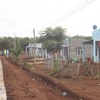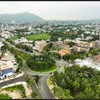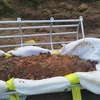Hanoi (VNA) – Hanoi aims to have 15 communes recognised as exemplary new-style rural areas this year, according to the capital city’s coordinating office for building new-style rural areas.
The city targets that the two districts of My Duc and Ba Vi will earn the title, and 25 communes will fulfil all criteria of advanced new-style rural areas.
To this end, Hanoi authorities have asked relevant agencies and localities to allocate resources to meet criteria of the programme, and facilitate agricultural development in the new context while tapping on unique traits and advantages of the capital city.
They are also required to review policies in infrastructure construction, particularly in production zones applying high technologies, as well as motivate people to switch to high-yield plants and bolster the use of agricultural machinery.
Nguyen Van Chi from the coordinating office for building new style-rural areas in Hanoi said five communes of Dan Phuong district were recognised exemplary new-style rural areas last year, and 18 others fulfilled criteria of advanced new-style rural areas. They included four in Dong Anh, three each in Gia Lam, Ung Hoa and Chuong My, two in Hoai Duc, and one each in Thanh Tri, Ba Vi and Quoc Oai.
Hanoi plans to mobilise about 92.7 trillion VND (4.07 billion USD) to complete all targets in new-style rural area building by 2025, including 83.7 trillion VND from the State budget and nearly 9 trillion VND from social sources.
The amount is 15 percent higher than total investment to the programme in the 2016-2020 period.
Apart from the amount, the city will allocate additional 400 billion VND to the Hanoi branch of the Vietnam Bank for Social Policies each year to offer soft loans to production and business establishments, farms and labourers in the agricultural sector.
To realise the target, the municipal People’s Committee has set five major tasks and solutions, including the strengthening of communications to improve public awareness of agriculture, farmers and rural areas among officials, Party members and the community.
The city will work to enhance the Party leadership over agriculture and rural development, while improving the capacity of State management officials, and innovating the management methods and speeding up administrative reform. The city will promote the role of the Vietnam Fatherland Front Committee as well as socio-political organisations and trade associations as well as the responsibility of leaders of agencies in the work.
At the same time, Hanoi will review and adjust its planning and projects on new-style rural areas, while continuing to developing the socio-economic infrastructure to suit its urban development.
Meanwhile, it will organise training courses for officials involving in advanced and model new-style rural building. The organisation of the coordinating offices for new-style rural area building will be completed from the city to grassroots levels.
Apart from its efforts to restructure the agricultural sector, the city will focus on implementing the Government’s Decree No. 98/2018/ND-CP dated on July 5, 2018 on encouraging cooperation and connectivity in agricultural production and farm produce selling, while developing concentrated production regions and strong products of each locality to draw more investments from businesses.
Along with promoting sustainable agricultural development and improving the quality, value and competitiveness of local farm produce, Hanoi will pay greater attention to environmental protection and increasing incomes for locals in rural areas.
In 2025, the capital city aims to complete all targets in new-style rural area building programme in all districts and communes. In the year, it expects 20 percent of total districts recognised as advanced new-style rural areas, 40 percent of its total communes completing all criteria of an advanced new-style rural area, and 20 percent of the communes becoming model new-style rural areas./.

